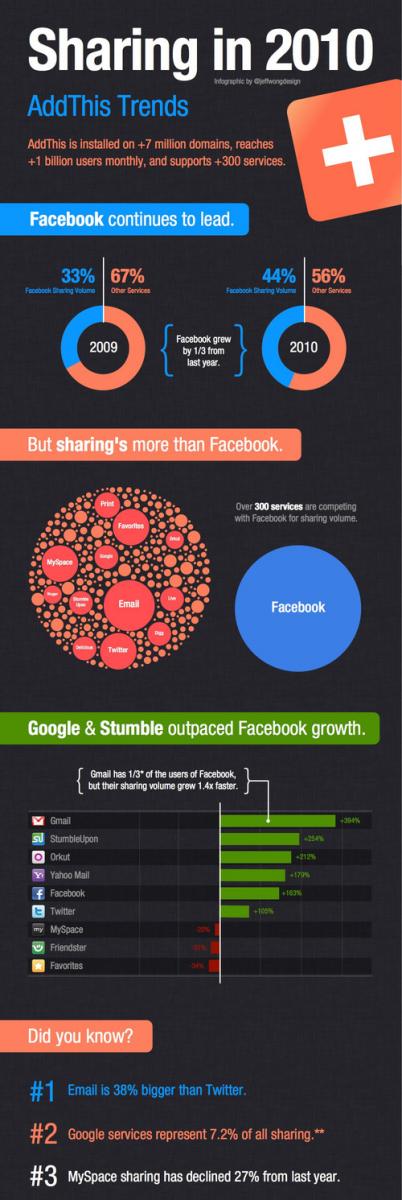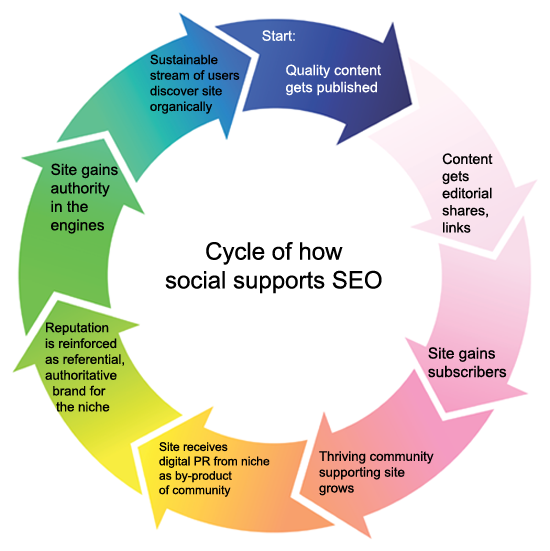
Facebook analytical insights introduced last year give brand marketers, agencies and communicators the ability to understand how their fan pages are performing. This performance should be aligned with the key performance indicators set forth in your master digital media strategy. Facebook shifted metrics to focus more on content sharing and fan behavior rather than the raw popularity of a page in its latest analytical updates. In 2011 here are some focus areas for your Facebook campaigns.
Where are the ‘Likes’ coming from
Facebook provides analytics that show how fans arrive at pages, whether through search engines, social engagement, or organically through other visibility generated in an integrated campaign. Understanding how your fans find you instantly gives you insight into how to reach them or expand your community for future outreach efforts.
Fan Page Demographics and User Behaviors
Demographic information about your fans includes gender, age, location (country and city) and language preferred. All data is anonymous, but this basic demographic information can help brands tailor and adjust their content to appeal to their true audience, and eliminate guesswork. Third party platforms from companies like BuddyMedia enable global brand marketers to focus their resources for a multilingual social engagement strategy to provide experiences in the necessary languages per the data extracted from Facebook.
Tab Popularity
A great improvement from previous analytics, with the expansion of tab customization on pages has enabled the analytics to tell brand marketers which tabs are most popular and provided more granular data on tab usage. These analytics shape future content strategies and tactics throughout a brands entire digital media strategy.
Quality Matters and Facebook Has The Data To Prove It
Facebook now gives each post a rating or index to allow for comparison and easy measurement. This function allows you to truly understand what content really makes fans tick to shape your future content strategies.

Are you gleaning insights robustly through Facebook? What are you finding out?

Social networking and search engine optimization will be forever linked and integrated for progressive marketing strategies. Good marketers know that the two work hand in hand and the linkage is growing more powerful daily. This graphic summarizes the Social SEO cycles in today’s hyper-connected environment.
As innovation in search and social continues, these platforms and ecosystems will continue to find valuable integration pathways between one another. As brands fight for relevancy and stay on the edge of what’s hot, the two systems truly need one another. I believe these brand categories will blur into a consolidated category. Will this just be “media” or will this be truly “digital media.” User experience consultants can help their clients by creating digital media strategies to embrace these changing times.

Here are 10 reasons to rethink your social strategy with a complete SEO integrated layer:
1. Search engines are smarter than ever before. You must embrace their new inteligence. The value of truly earned organic, editorial links will only continue to increase in value.
2. Earned links are the modern media hit factories of yesterday. A strong social strategy will earn a growing amount of editorially-earned links daily.
3. Being fresh with your editorial pace and content will enable you to get more link baits for authoritative domain fish out in the sea.
4. Frequent Updates = frequent visits by spiders, humans and everything in between.
5. Social web success brings increasing returns. Likes and other rating systems influence search algorithyms.
6. Social is sustainable. An honest, well-nurtured community strategy will naturally progress, keep you focused, and build domain authority.
7. Links aren’t good enough. You need strong PR digitally and offline. Strong endorsements contextually to your brand will help your digital reputation strategy.
8. Ride the wave. With 600 million people spending 30 minutes a day on Facebook, your focus should be there.
9. Social scavengers produce links more likely than any other first-time brand user.
10. Stay compelling and of high quality when producing content.